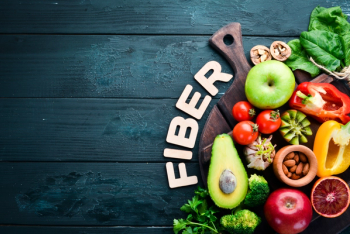
Encapsulating Nutrients with Pea Protein
How one Irish company is innovating the protein and micro-encapsulation sectors
In consideration of the often artificial and expensive methods for encapsulating nutrients, AnaBio Technologies Ltd. (Dublin, Ireland) is ready to commercialize a food-grade alternative in
The start-up Irish company’s intent has always been to provide economical, food-grade encapsulation alternatives that efficiently deliver sensitive ingredients-such as probiotics, flavonoids, and carotenoids-to particular target sites in the body. (The addition of seaweed coatings makes time-delayed release possible.) The company provides encapsulation with other ingredients too, like milk proteins and citrus extracts, but AnaBio’s latest venture with yellow peas should provide a handful of advantages.
Beyond its ability to carry bioactive nutrients through volatile conditions of the human body, AnaBio’s pea protein is, at the end of the day, still a protein with nutritional value.
“I’ll put it simply: there are some companies that want an empty protein capsule,” says Sinéad Doherty, PhD, AnaBio director and CEO. “Some customers just want to have an increased protein content in their product, and pea protein represents a very nutritional ingredient. Its amino acid profile is just fantastic.”
While pea’s amino acid profile can vary from pea farm to pea farm, Doherty says her company only sources peas with a PDCAS (Protein Digestibility Corrected Amino Acid Score) close to 1-the score of good-quality milk protein. Peas are also plant-based, hypoallergenic, and significantly cheaper than milk. And recent U.S. and European legislation is expanding their approved uses, even so far as into toddler foods, growing-up milk, and infant formula. Doherty says it’s a sign that regulatory authorities are increasingly recognizing the nutritional value and safety of these legumes.
Compared to milk protein encapsulation, pea protein capsules (as small as 10 microns) can improve a nutrient’s appearance, or, rather, lack of appearance in beverage platforms. Doherty says that different milk proteins can yield beverages that are cloudy and turbid, but “the beauty of our pea protein is that it can produce capsules that are very transparent with no astringent taste.”
Still, the primary purpose of AnaBio’s pea product is to carry ingredients to pinpointed locations in the body. A number of in vitro, animal, and human studies show that AnaBio’s pea technology delivers ingredients to their target locations and at viable concentrations. And probiotics and sports nutrients are just a few substantiated ingredients. Perhaps most notable, AnaBio says its pea protein encapsulation can effectively stimulate the release of satiety hormones glucagon-like peptide 1 (GLP-1) and cholesytokinin (CCK) in the intestine. Furthermore, pea protein encapsulation shows potential as an oral insulin delivery system. If such delivery can be adequately supported by ongoing research, this has potential to be the first-ever oral delivery system for insulin.
“Obviously, companies use pea to do various things,” says Doherty. “But no one has been able to use pea to micro-encapsulate and deliver bioactive ingredients like these to certain parts of the body.”
Peas and Appetite
Studies linking pea protein to satiety are increasing at an unusual pace. While various proteins are under investigation for potential appetite-lowering effects, pea appears to be one of the more potent proteins for increasing the production of GLP-1 and CCK, two hormones that mediate digestion and the feeling of fullness. Add to this the fact that GLP-1 on its own supports insulin secretion, and pea becomes a real contender for addressing conditions such as type II diabetes.
AnaBio is contributing much of its own research to this field, having already conducted studies on rats, pigs, and horses when it comes to pea protein and satiety hormones. Next up is a human clinical study that begins in November.
Newsletter
From ingredient science to consumer trends, get the intel you need to stay competitive in the nutrition space—subscribe now to Nutritional Outlook.





